
Ville Vieille: The Historic Heartbeat of Nancy
Discover the enchanting Ville Vieille in Nancy, a blend of historical landmarks, charming streets, and vibrant culture in the heart of France.
Ville Vieille in Nancy is a captivating blend of historical charm and vibrant culture. This neighbourhood, known as the Old Town, is where Nancy's past comes alive through its well-preserved architecture, winding cobblestone streets, and grand landmarks. As you stroll through Ville Vieille, every corner reveals a piece of the city's storied history, from medieval times to the Renaissance. The Place Stanislas, a UNESCO World Heritage site, is a must-see. This grand square is surrounded by ornate buildings and is a hub of activity with cafes, fountains, and statues. Nearby, the Ducal Palace, once the residence of the Dukes of Lorraine, now houses the Lorraine Museum, showcasing art and artifacts that tell the region's history. Don't miss the Église des Cordeliers, a beautiful Gothic church that offers a serene escape. The Old Town is also home to the Porte de la Craffe, a medieval gate that once protected the city. For a more relaxed experience, visit the Parc de la Pépinière, a lush green space perfect for a leisurely stroll or a picnic. Ville Vieille offers a delightful mix of history, culture, and leisure, making it an essential stop on any visit to Nancy.
Local tips in Ville Vieille
- Visit early in the morning to avoid crowds at Place Stanislas.
- Wear comfortable shoes; the cobblestone streets can be uneven.
- Check local listings for cultural events at the Ducal Palace and Place Stanislas.
- Try local Lorraine cuisine at cafes around the Place Stanislas.
- Bring a camera for picturesque views of historical buildings and street scenes.
Ville Vieille: The Historic Heartbeat of Nancy
Ville Vieille in Nancy is a captivating blend of historical charm and vibrant culture. This neighbourhood, known as the Old Town, is where Nancy's past comes alive through its well-preserved architecture, winding cobblestone streets, and grand landmarks. As you stroll through Ville Vieille, every corner reveals a piece of the city's storied history, from medieval times to the Renaissance. The Place Stanislas, a UNESCO World Heritage site, is a must-see. This grand square is surrounded by ornate buildings and is a hub of activity with cafes, fountains, and statues. Nearby, the Ducal Palace, once the residence of the Dukes of Lorraine, now houses the Lorraine Museum, showcasing art and artifacts that tell the region's history. Don't miss the Église des Cordeliers, a beautiful Gothic church that offers a serene escape. The Old Town is also home to the Porte de la Craffe, a medieval gate that once protected the city. For a more relaxed experience, visit the Parc de la Pépinière, a lush green space perfect for a leisurely stroll or a picnic. Ville Vieille offers a delightful mix of history, culture, and leisure, making it an essential stop on any visit to Nancy.
Iconic landmarks you can’t miss
Place Stanislas
Explore the architectural beauty and vibrant atmosphere of Place Stanislas, a UNESCO World Heritage site in Nancy, France.

Porte Désilles
Discover the rich history and poignant beauty of Porte Désilles, a memorial that stands as a testament to Nancy's past and its enduring spirit.

Basilica of Saint Epvre of Nancy
Explore the grandeur of the Basilica of Saint Epvre in Nancy, a stunning blend of Gothic and Renaissance architecture with breathtaking stained glass.
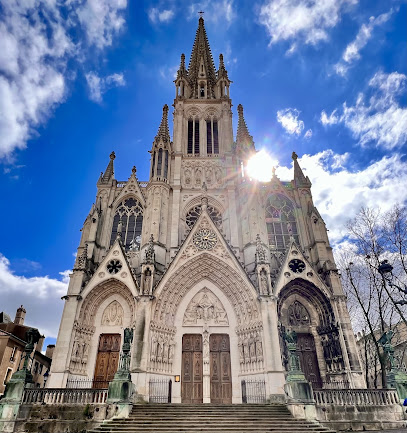
Porte de la Citadelle
Explore the historical charm of Porte de la Citadelle, a magnificent landmark in Nancy that showcases the city’s rich architectural heritage.

Saint Nicolas Gate of Nancy
Explore the stunning Saint Nicolas Gate of Nancy, a historical landmark showcasing exquisite architecture and rich cultural heritage in the heart of Lorraine.

Tower of Commander Saint Jean du Vieil Aître, Nancy
Explore the Tower of Commander Saint Jean du Vieil Aître in Nancy, a stunning historical landmark reflecting France's rich architectural heritage and cultural stories.

Monument to Jacques Callot fountain
Explore the artistic heritage of Nancy at the Monument to Jacques Callot, a remarkable historical landmark and fountain celebrating Lorraine's rich cultural legacy.

Monument à René II de Lorraine.
Explore the historical significance of the Monument à René II de Lorraine in Nancy, a captivating cultural landmark that reflects the region's rich heritage.

House of the people (Nancy)
Discover the House of the People in Nancy, a historical gem showcasing Art Nouveau architecture and rich cultural heritage.

Hôtel du Marquis de Ville
Experience the charm and elegance of Hôtel du Marquis de Ville, a historical landmark in Nancy, France, steeped in rich heritage and architectural beauty.

Essential places to dine
Les Fils à Maman Nancy
Discover the charm of French cuisine at Les Fils à Maman Nancy - where nostalgia meets culinary creativity.

Le bouche à oreille
Discover exquisite French cuisine at Le Bouche à Oreille in Nancy, featuring artisanal cheeses and gourmet dishes in a charming setting.

La Gentilhommière
Experience fine French dining at La Gentilhommière in Nancy, where exquisite cuisine meets elegant ambiance for an unforgettable meal.
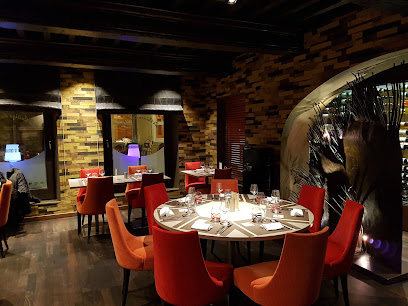
La Table de Bacchus
Discover exquisite French-Mediterranean cuisine at La Table de Bacchus in Nancy - a culinary gem for discerning travelers.

La Puce à l'Oreille
Experience authentic French cuisine at La Puce à l'Oreille in Nancy, where tradition meets modern culinary artistry.

Au Coin de la Rue
Experience authentic French cuisine at Au Coin de la Rue in Nancy – where every dish tells a story.

Le V-Four
Discover exquisite French cuisine at Le V-Four in Nancy – where culinary artistry meets elegant ambiance.

Aux Délices du Palais
Experience the exquisite fusion of French and Mediterranean flavors at Aux Délices du Palais in Nancy.

La Toq'
Experience exquisite French cuisine at La Toq', Nancy's premier fine dining destination known for its artistic dishes and exceptional service.

Au Bistronome
Experience authentic French cuisine at Au Bistronome in Nancy - where tradition meets modern culinary artistry.

Markets, malls and hidden boutiques
Sorbet Citron
Discover Sorbet Citron in Nancy, where exquisite candies and delightful gifts create a sweet shopping experience.

Flying Tiger Copenhagen Nancy
Discover unique gifts and quirky accessories at Flying Tiger Copenhagen in Nancy, where every item tells a story.

CASA Nancy
Explore CASA Nancy for exquisite gifts, stylish garden furniture, and essential kitchen supplies in the heart of Nancy, France.

Boulet
Discover the essence of contemporary fashion at Boulet Store in Nancy, where style meets sophistication and local trends flourish.
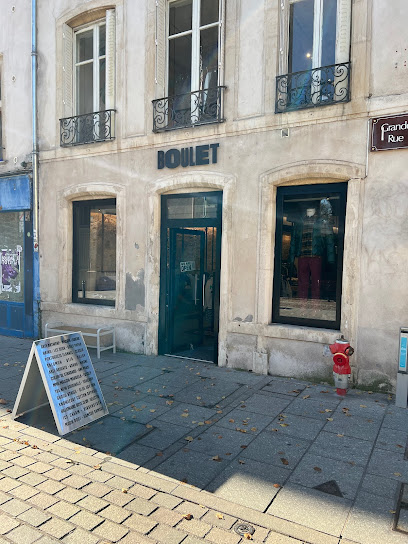
by CRACOTTE
Explore by CRACOTTE in Nancy for unique costume jewelry and stylish women's clothing, celebrating French craftsmanship and design.

Repère
Explore Repère in Nancy for a unique shopping experience, featuring exquisite gifts and stylish clothing for every taste.

Turnover Concept Store
Explore Turnover Concept Store in Nancy for eclectic fashion and music, where unique styles meet local culture.

La Boîte A Photos
Explore La Boîte A Photos for unique gifts and souvenirs that capture the spirit of Nancy, France's artistic charm.

La Reserve
Experience the essence of chic fashion at La Reserve, Nancy's premier clothing store offering a curated selection of stylish apparel.

Le Cent 9
Discover unique gifts and local treasures at Le Cent 9, a charming gift shop in Nancy that embodies French culture and artistry.

American Vintage Femme
Discover chic women's clothing at American Vintage Femme in Nancy, where style meets elegance in the heart of France.

Essential bars & hidden hideouts
Les Artistes Café
Discover the charm of Les Artistes Café in Nancy, where local flavors meet a warm atmosphere in this artistic café-bar haven.

L'Ambassy
Experience the perfect blend of café charm and vibrant bar culture at L'Ambassy in Nancy, where every sip is a delight.
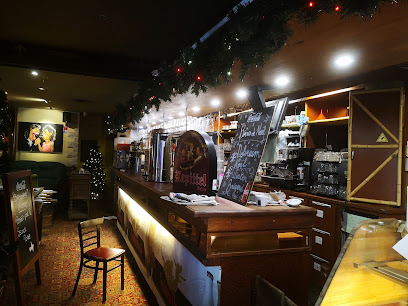
Le Brexit
Experience the lively atmosphere of Le Brexit, a trendy bar in Nancy offering a diverse drink menu and a perfect spot for socializing.

Le Gavroche
Discover the cozy charm of Le Gavroche in Nancy, where delightful beverages meet a welcoming atmosphere, perfect for any traveler.
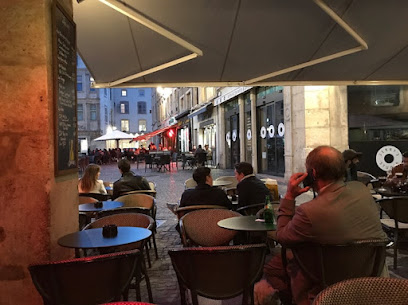
Barami
Discover the local culinary culture at Barami, a cozy bar and café in Nancy offering delicious food and an extensive beverage selection.

Café des Trolls
Experience the best of local brews and vibrant atmosphere at Café des Trolls, a must-visit beer hall in the heart of Nancy.

MiMi Saint Epvre
Discover the vibrant atmosphere and unique drinks at MiMi Saint Epvre, a must-visit bar in the heart of Nancy, France.

Bar des Carmes
Discover the cozy atmosphere of Bar des Carmes, a delightful bar and brewery in Nancy, perfect for enjoying artisan drinks and local flavors.

Bar Lounge Le Comptoir
Discover the lively atmosphere and exquisite drinks at Bar Lounge Le Comptoir, the perfect spot for nightlife in Nancy.

Bar Central
Experience the charm of Bar Central in Nancy, where delightful cuisine meets a welcoming atmosphere for an unforgettable dining experience.

Local Phrases
-
- HelloBonjour
[bon-zhoor] - GoodbyeAu revoir
[oh ruh-vwahr] - YesOui
[wee] - NoNon
[nohn] - Please/You're welcomeS'il vous plaît / De rien
[seel voo pleh / duh ryen] - Thank youMerci
[mehr-see] - Excuse me/SorryExcusez-moi/Désolé
[ex-kew-zay mwa / day-zoh-lay] - How are you?Comment ça va?
[koh-mohn sah vah] - Fine. And you?Bien. Et vous?
[byen. ay voo] - Do you speak English?Parlez-vous anglais?
[par-lay voo ahn-glay] - I don't understandJe ne comprends pas
[zhuh nuh kohm-prahn pah]
- HelloBonjour
-
- I'd like to see the menu, pleaseJe voudrais voir le menu, s'il vous plaît
[zhuh voo-dray vwahr luh muh-nyu, seel voo pleh] - I don't eat meatJe ne mange pas de viande
[zhuh nuh mahnj pah duh vyand] - Cheers!Santé!
[sahn-tay] - I would like to pay, pleaseJe voudrais payer, s'il vous plaît
[zhuh voo-dray pay-ay, seel voo pleh]
- I'd like to see the menu, pleaseJe voudrais voir le menu, s'il vous plaît
-
- Help!Au secours!
[oh suh-coor] - Go away!Allez-vous en!
[ah-lay vooz ahn] - Call the Police!Appelez la police!
[ah-peh-lay lah poh-lees] - Call a doctor!Appelez un médecin!
[ah-peh-lay uh meh-deh-sahn] - I'm lostJe suis perdu
[zhuh swee pair-doo] - I'm illJe suis malade
[zhuh swee mah-lahd]
- Help!Au secours!
-
- I'd like to buy...Je voudrais acheter...
[zhuh voo-dray ash-tay...] - I'm just lookingJe regarde juste
[zhuh ruh-gahrd zhuhst] - How much is it?Combien ça coûte?
[kohm-byen sah koot] - That's too expensiveC'est trop cher
[say troh shair] - Can you lower the price?Pouvez-vous baisser le prix?
[poo-veh voo bay-say luh pree]
- I'd like to buy...Je voudrais acheter...
-
- What time is it?Quelle heure est-il?
[kel ur eh-teel] - It's one o'clockIl est une heure
[eel eh tun ur] - Half past (10)Dix et demie
[dees ay duh-mee] - MorningMatin
[mah-tahn] - AfternoonAprès-midi
[ah-pray mee-dee] - EveningSoir
[swahr] - YesterdayHier
[yehr] - TodayAujourd'hui
[oh-zhoor dwee] - TomorrowDemain
[duh-mahn] - 1Un
[uhn] - 2Deux
[duh] - 3Trois
[twah] - 4Quatre
[kat] - 5Cinq
[sank] - 6Six
[sees] - 7Sept
[set] - 8Huit
[weet] - 9Neuf
[nurf] - 10Dix
[dees]
- What time is it?Quelle heure est-il?
-
- Where's a/the...?Où se trouve...?
[oo suh troov] - What's the address?Quelle est l'adresse?
[kel eh la-dress] - Can you show me (on the map)?Pouvez-vous me montrer (sur la carte)?
[poo-veh voo muh mohn-tray (soor lah kart)] - When's the next (bus)?Quand est le prochain (bus)?
[kahnd eh luh proh-shahn (bus)] - A ticket (to ....)Un billet (pour ....)
[uhn bee-yay (poor)]
- Where's a/the...?Où se trouve...?
History of Ville Vieille
-
Ville Vieille, the historic heart of Nancy, has its origins in the medieval period, with its layout reflecting the feudal society of the 12th century. Initially a fortified settlement, it served as a strategic stronghold under the influence of the Duke of Lorraine, who saw the necessity of protecting the region from both external threats and rival claimants.
-
In the early 18th century, Duke Stanislas Leszczynski, the ex-King of Poland, transformed Nancy into a cultural hub. His vision for Ville Vieille included the construction of the stunning Place Stanislas, which became a focal point for both civic life and urban aesthetics. This period marked a significant architectural and cultural revival, with many buildings in Ville Vieille reflecting the Rococo style that Stanislas favored.
-
The French Revolution brought considerable change to Ville Vieille, as it did throughout France. The area witnessed the turmoil of revolutionary fervor, leading to the repurposing of churches and public spaces. The transformation of social structures and the secularization of institutions were evident, reshaping the cultural landscape of Nancy and the surrounding region.
-
During World War II, Ville Vieille was significantly affected by the German occupation. The area faced destruction due to bombings, and many historical buildings were damaged. However, post-war reconstruction efforts prioritized the preservation of Nancy's heritage, leading to a revival of its architectural glory, particularly in Ville Vieille.
-
In recent years, Ville Vieille has experienced a cultural renaissance, with a focus on promoting its rich history and diverse cultural offerings. Festivals, art exhibitions, and a thriving culinary scene have revitalized the area, making it a vibrant destination for both locals and tourists. The preservation of historical sites continues to be a priority, ensuring that the legacy of Ville Vieille remains central to Nancy's identity.
Ville Vieille Essentials
-
Ville Vieille is centrally located in Nancy, making it easily accessible from other neighborhoods. The main train station, Gare de Nancy, offers connections to Ville Vieille via local trams (Line 1 and 2) and buses. If you are arriving at the airport, the closest airport is Metz-Nancy-Lorraine Airport, from which you can take a shuttle bus to Nancy city center, followed by a tram or taxi to Ville Vieille.
-
Ville Vieille is pedestrian-friendly, with many attractions within walking distance. Public transport, including trams and buses, is efficient. Trams Line 1 and 2 run through the area, providing easy access to other parts of Nancy. Bicycles can be rented through local bike-sharing programs, allowing for an enjoyable and eco-friendly way to explore the neighborhood.
-
Ville Vieille is generally safe for tourists, but standard precautions should be taken. Avoid poorly lit areas at night, especially around the outskirts of the neighborhood. Petty crimes like pickpocketing can occur in crowded areas, so keep an eye on your belongings. While there are no specific high-crime areas targeting tourists, it's advisable to remain vigilant, especially in busy public transport hubs.
-
In case of an emergency, dial 112 for immediate assistance. The local police station is located in the city center, and hospitals are available within a short distance. Ensure you have travel insurance that covers medical emergencies. For minor health issues, pharmacies are available throughout Ville Vieille where you can purchase over-the-counter medications.
-
Fashion: Do dress comfortably and stylishly, as the French value fashion. Avoid overly casual attire like beachwear. Religion: Do respect local customs, especially in churches. Public Transport: Do offer your seat to the elderly and pregnant women. Don't eat or drink on public transport. Greetings: Do greet people with a polite 'Bonjour' when entering shops or restaurants. Eating & Drinking: Do try local specialties like quiche lorraine and accept invitations to share meals. Don't refuse food offerings, as it may be viewed as impolite.
-
To experience Ville Vieille like a local, visit the Marché Central, where you can find fresh produce and local delicacies. Take time to explore the hidden squares and alleys, where you may stumble upon charming cafés and boutiques. Engage with locals, as they are often eager to share insights about the neighborhood's history and culture. Don’t miss the beautiful Place Stanislas, especially during the evenings when it is beautifully illuminated.
Trending Landmarks in Ville Vieille
Nearby Cities to Ville Vieille
-
Things To Do in Dudelange
-
Things To Do in Remich
-
Things To Do in Luxembourg City
-
Things To Do in Colmar
-
Things To Do in Grevenmacher
-
Things To Do in Arlon
-
Things To Do in Strasbourg
-
Things To Do in Echternach
-
Things To Do in Diekirch
-
Things To Do in Vianden
-
Things To Do in Wiltz
-
Things To Do in Freiburg
-
Things To Do in Clervaux
-
Things To Do in Basel
-
Things To Do in Reims











